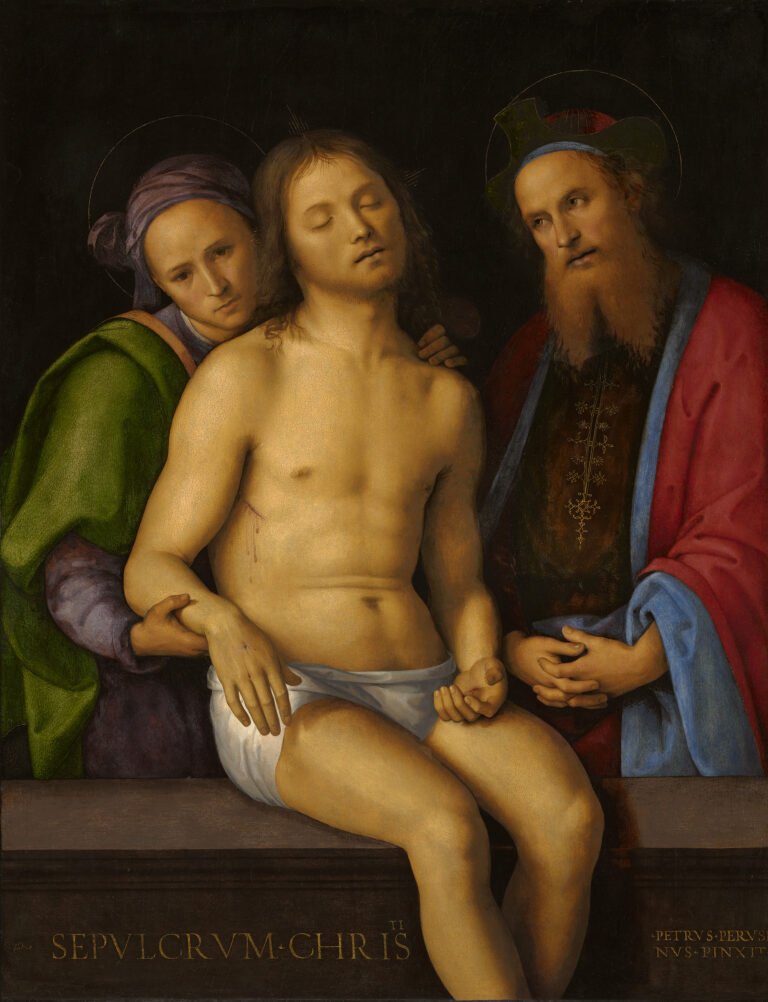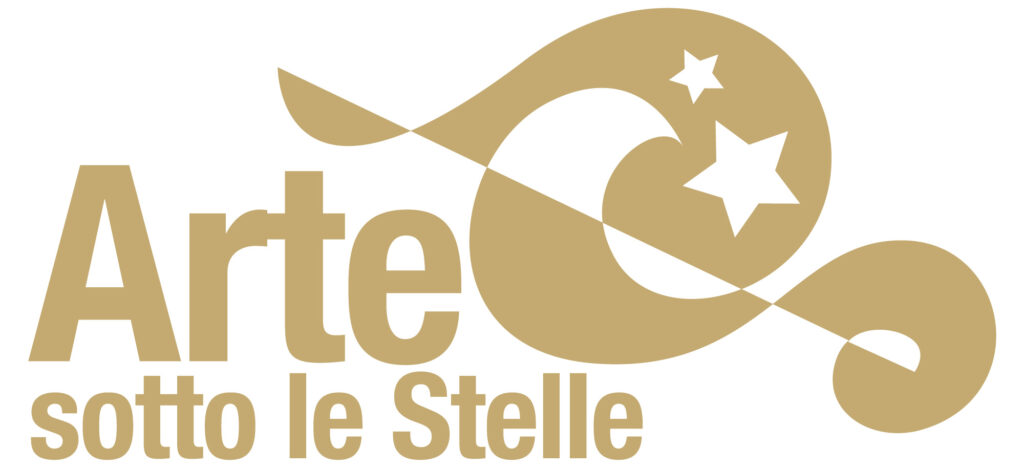Sepulchrum Christi – The Clark – Massachusetts
A group of three characters stand out on a black background: on the left Nicodemus, dressed in a purple robe that also covers his head partially covered by a contrasting green cloak, supports the lifeless body of Jesus under the absorbed and grieving gaze of Joseph of Arimathea, on the right, whose red and blue cape opens to reveal a richly decorated dress underneath.
The body of Christ is loosely laid on its tombstone: the Latin inscription “SEPULCRUM CHRISTI” (the sepulchre of Christ) is engraved on the marble, while on the other side, just below Joseph of Arimatea, it is possible to see Perugino’s signature, PETRUS SINUPERUS PINXIT.
Despite the wound on his side, still open and bleeding, the expression on the face of Jesus is serene and does not betray any sign of suffering; at the same time the body, who is naked except for a drape that wraps his hips, recalls the ideal beauty canons of classical statuary.
The atmosphere is calm and the suffering is expressed in a compound way: the whole composition encourages devotion and prayer; the tone is intimate and quiet.
The painting, which dates back to about 1495/1498, was probably realized in order to adorn the altar of some private chapel.
It is preserved at the Sterling and Francine Clark Art Institute, Williamstown (Massacchussets).











